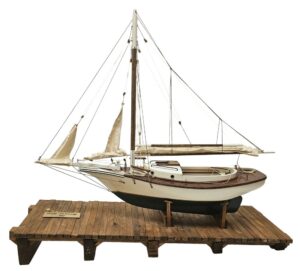Beautifully Detailed Friendship Sloop Model
Showing Hauled Out on Boatyard Ramp
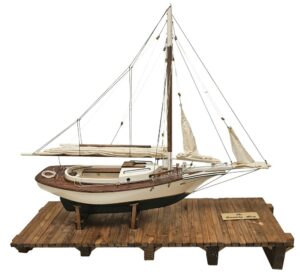
Dimensions:
Model Overall Lgth: 19″ Draft: 3″ Ht to top f mast: 16 1/2″
Lgth of Planked Ramp: 22″
Presented is a very nicely detailed model of the famous Friendship Sloop in diorama style on a cradle
on a slanted planked boatyard ramp.
Price: $850.00 Shipping: $85.00
Presented is a very nicely detailed model of the famous Friendship Sloop in diorama style on a cradle on a slanted planked boatyard ramp. This appealing model with sails partially stowed is being hauled out for boatyard work or winter storage. The lines and shape of the hull of this iconic design appear to be very accurate from pictures and drawings we’ve seen.
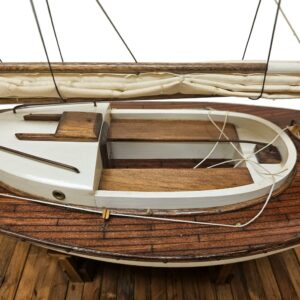 |
 |
The Friendship sloop, also known as a Muscongus Bay sloop or lobster sloop, is a gaff-rigged working boat design that originated in Friendship, Maine, around 1880 and has survived as a traditional-style sailboat.
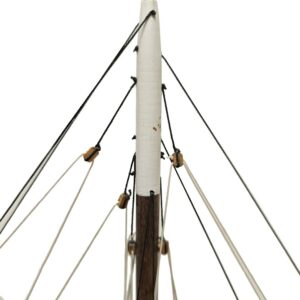 |
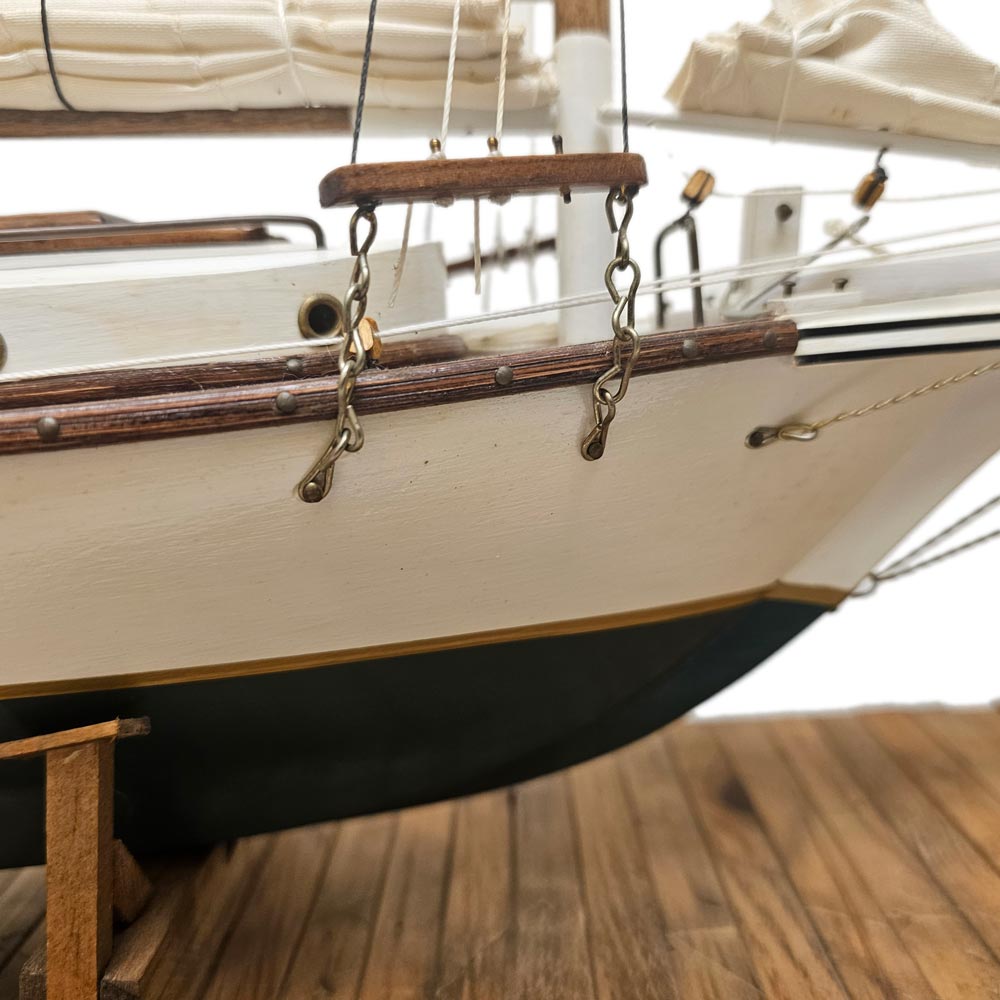 |
Close Up of top of the mast and bow of boat
Fishermen in Friendship and neighboring Bremen collectively originated the boat’s design, influenced in part by the fishing sailboats of Gloucester, Mass. The boat was used primarily for lobstering or local commerce. Boatbuilder Wilbur A. Morse was principal among five major Muscongus Bay builders that produced the design from the 1880s to the 1910s.
One person could manage its single-masted rig and haul traps unassisted, yet the boat could carry sizable loads. With an open cockpit aft and a small forward cabin outfitted with bunks and a stove, it made fishing during cold weather much less arduous than in an open boat. By 1900 these sloops ranged from 30–40 feet (9.1–12.2 m) feet long along the deck and were used for bringing fish or lobsters from offshore vessels to processing plants.
One person could manage its single-masted rig and haul traps unassisted, yet the boat could carry sizable loads. With an open cockpit aft and a small forward cabin outfitted with bunks and a stove, it made fishing during cold weather much less arduous than in an open boat. By 1900 these sloops ranged from 30–40 feet (9.1–12.2 m) feet long along the deck and were used for bringing fish or lobsters from offshore vessels to processing plants.
